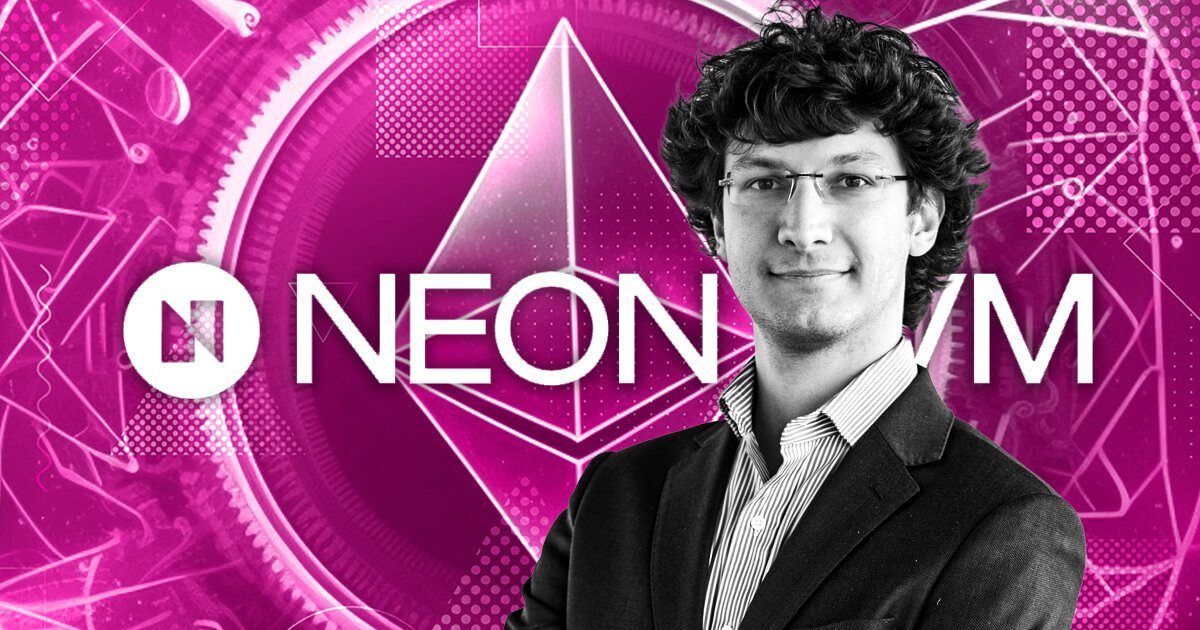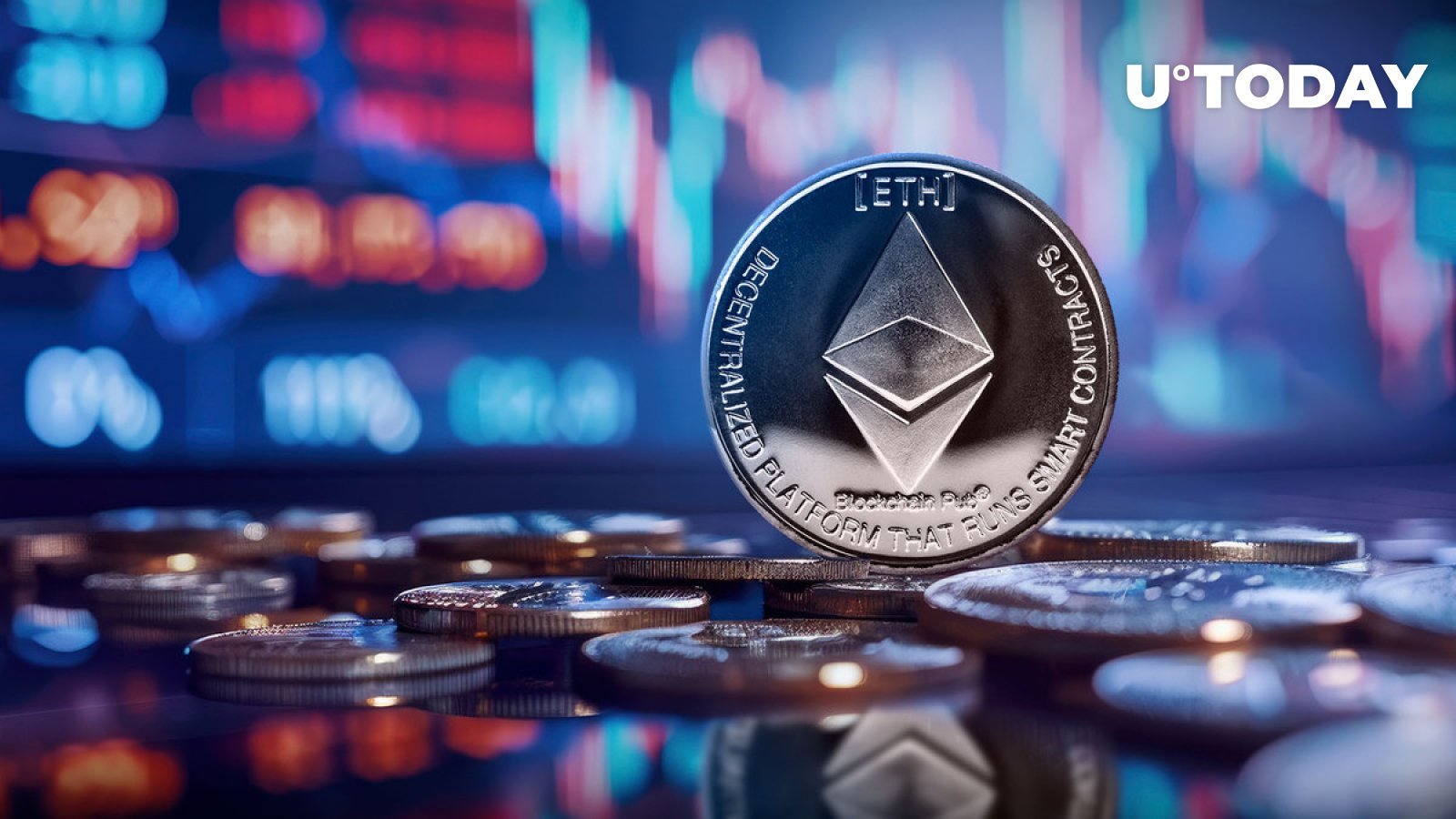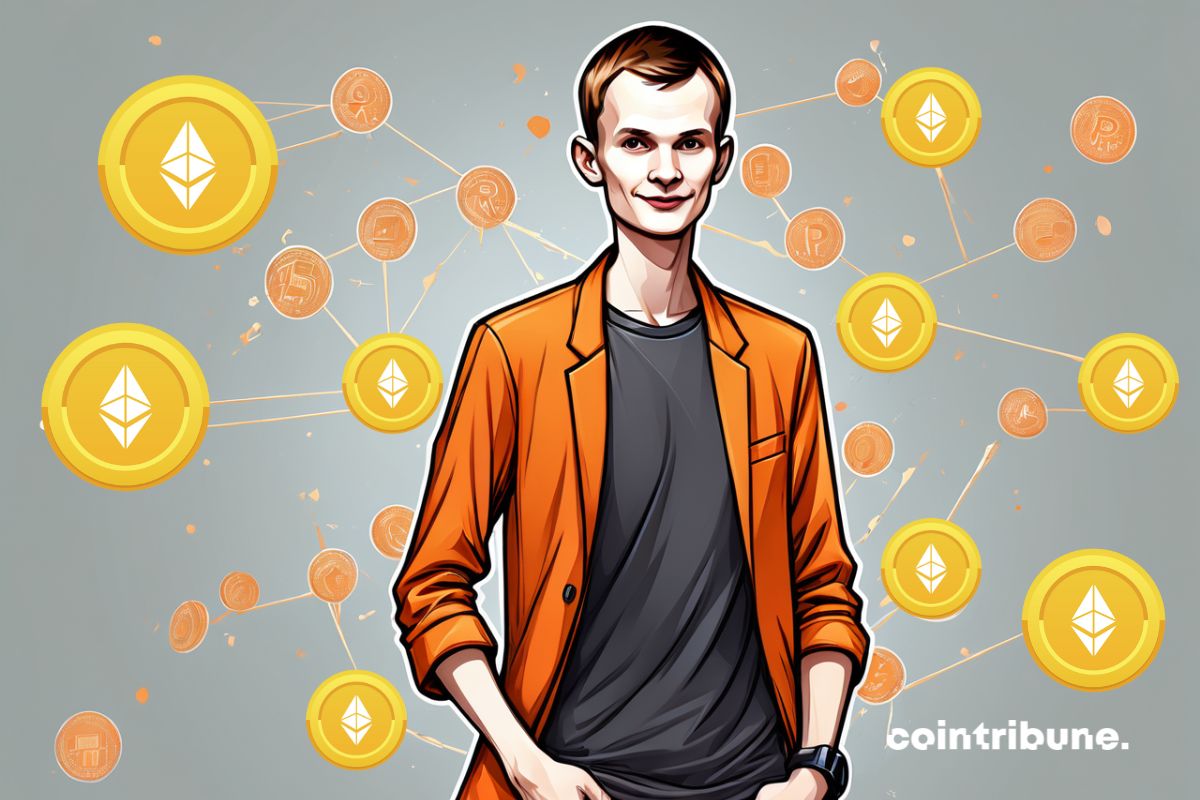Ethereum
How Neon EVM blends Ethereum and Solana to boost blockchain app development: Interview

In a rapidly evolving blockchain landscape, Neon EVM emerges to bridge the gap between the Ethereum and Solana ecosystems. In this insightful interview, Davide Menegaldo, Neon EVM’s Chief Commercial Officer, sheds light on the platform’s innovative approach to improving user experience and driving mainstream adoption of decentralized applications (DApps).
Neon EVM is an Ethereum Virtual Machine (EVM) on Solana. It allows developers to seamlessly deploy their Ethereum-based DApps on the Solana blockchain, leveraging its high throughput, low latency, and scalability. With parallel processing capabilities, Neon EVM revolutionizes the traditional sequential execution of transactions, enabling multiple DApps to operate simultaneously without network congestion.
Menegaldo emphasizes Neon EVM’s commitment to lowering entry barriers for mainstream DApp adoption by providing developers with familiar Ethereum tooling and supporting comprehensive integration with existing infrastructures. The platform’s unique features, like Neon Proxy and NeonPass, further enhance the user experience and facilitate seamless interoperability between Ethereum and Solana.
Looking ahead, Neon EVM aims to drive innovation through strategic partnerships, optimizing scalability, security, and interoperability, ultimately shaping the future of DApps and fostering their widespread adoption across various industries.
Can you give us an overview of Neon EVM and how it works to improve the user experience in the blockchain space?
Neon EVM is an Ethereum Virtual Machine on Solana that allows developers to scale Ethereum dApps using Solana as the settlement layer. So, at Neon EVM, we enable developers to deploy Ethereum dApps on Solana with minimal reconfiguration of their existing code while benefiting from Solana’s technical advantages, such as parallel processing.
We aim to improve experiences for both developers and end-users. An Ethereum-native developer, when building on Solana, may face multiple challenges — moving from Solidity to Rust coding, different sets of toolings, APIs, etc., and this results in a long-drawn process, sometimes taking months or a year plus, potentially causing a loss of market opportunity. By deploying via Neon EVM, these barriers are smoothened, translating to a simplified development process and saving time and effort.
End-users benefit from both chains. EVM users’ favored Ethereum dApps are now in the Solana environment, and they enjoy the high throughput, reduced costs, and other flagship features the Solana ecosystem offers. Meanwhile, Solana users get access to new and innovative use cases that were earlier only available in the Ethereum environment.
What are some of the key ways Neon EVM is lowering the entry barriers for mainstream DApp adoption?
Neon EVM aims to significantly reduce entry barriers for mainstream DApp adoption at every step. Firstly, we provide developers access to Ethereum toolkit, simplifying the development and deployment process. This includes a host of Ethereum tools — Foundry, Hardhat, and Truffle, to name a few. Additionally, our flagship products, such as NeonPass, streamline various aspects of DApp usage, enhancing overall user experience.
Can you explain the role of Neon EVM as a bridge between the Ethereum and Solana ecosystems? Why is this bridge so important for developers and the broader blockchain industry?
From the technical perspective, Neon EVM is not a bridge. It is a transition infrastructure between chains, but the method of doing that is not via bridging. We enable this transition from Ethereum to Solana via NeonPass, building an environment composed of a series of smart contracts on Solana directly connected to the network. NeonPass allows a two-way transfer tool for bringing assets in and out of the Neon EVM platform by to provide compatibility with the EVM world.
What do you see as the main challenges of blockchain technology for developers, and how is Neon EVM offering innovative solutions to overcome these obstacles?
The primary challenges for blockchain developers often revolve around scalability, interoperability, deployment issues, and high transaction costs. Neon EVM tackles these obstacles by providing the best of Solana & Ethereum and merging the two OG L1 benefits.
Neon EVM is the world’s first Mainnet parallelized EVM that inherits its renowned high throughput, low latency, and scalability capabilities from Solana. Today, Solana is a preferred network by a growing number of gaming, NFT, and DeFi companies and is showing a high user base, increasing transaction volume, and massive growth. Neon EVM intrinsically benefits from this, and so do the applications that deploy here. Subsequently, Solana upgrades such as Firedancer would provide additional scalability, which would have a positive effect on Neon EVM as well.
We ease interoperability, and our recent partnership with deBridge opens access to liquidity and cross-chain value transfer across almost ten EVM chains, including Polygon, BNB, Avalanche, and more.
At Neon EVM, deployment challenges are overcome because we continue to enhance compatibility by supporting EVM Opcodes and will, in the future, focus on enabling this further. This ensures that developers can seamlessly transition their Ethereum-based dApps to the Solana blockchain without extensive code refactoring and with the latest Solidity compiler. This compatibility extends to using familiar development tools and environments, such as Solidity and Vyper languages, allowing for a smooth migration and integration process. We also support Chainlink and Pyth, as these are native to Solana and hence available for builders on Neon EVM.
Paint a picture of the future where DApps are as common and user-friendly as traditional applications. How is Neon EVM driving this user-centric development of DApps?
DApps have been developed to enable secure, blockchain-based applications with transparent governance and are still in the early stages. Looking toward the future, DApps have the potential to disrupt traditional industries by allowing for peer-to-peer interactions and transactions without a central authority. But right now, it is a tedious process for users – connecting wallets, multiple transaction signatures, token bridging, wrapping tokens, searching pools to fund, gas tanks, congestion, security issues, and an overall fractured user experience.
To paint a healthy picture of the DApp ecosystem, the primary goal would be a multi-chain, cross-chain seamless DApp experience where the user simply clicks to get what he wants done on-chain.
This is where Neon EVM fits in and will provide those infrastructure building blocks to enable seamless transition with best of the benefits available across ecosystems so that the end consumer does not have to worry about using and workings of a DApp and can focus on enjoying the DApps utility instead.
Can you explain Neon EVM’s role as the first and only parallel EVM on Solana Mainnet? What benefits does this offer to developers?
Neon EVM’s distinction as the first and sole parallel EVM on the Solana Mainnet is a game-changer for developers seeking to overcome the limitations of sequential transaction execution. By introducing parallel execution, based on Solana Sealevel technology, Neon EVM revolutionizes the traditional approach to processing sequential blockchain transactions on the EVM side.
Unlike sequential execution, where operations are handled one after the other, parallel execution allows multiple transactions to occur simultaneously. This significantly enhances the benefits for developers, as they can now build and deploy DApps on Solana’s high-speed settlement layer without the constraints imposed by sequential execution, commonly seen in the Ethereum environment.
So, for instance, in a parallel processing environment, if a high demand influx on NFT minting is creating network congestion, then this will not affect other users trading on DEXs. Thus, a host of applications from all verticals and domains—NFTs, DeFi, gaming, and payments—can coexist in a parallelized architecture ecosystem as Neon EVM.
How does Neon EVM enable a seamless transition for developers moving DApps from Ethereum to Solana, including support for Ethereum’s native tooling?
Neon EVM facilitates a smooth transition for developers migrating DApps from Ethereum to Solana, offering comprehensive support for Ethereum’s native tooling. With Neon EVM, developers can effortlessly deploy Solidity or Vyper contracts on Solana, capitalizing on its high-speed, parallel processing capabilities and reduced gas fees without the need for extensive retooling.
This seamless integration with Solana’s ecosystem is made possible through familiar EVM development tools. These tools ensure a user-friendly experience while leveraging Solana’s robust infrastructure for unparalleled scalability and efficiency. Neon EVM combines technical sophistication with developer convenience, boasting robust compatibility with the EVM opcode set. This compatibility empowers developers to push the boundaries of DApp performance and innovation on the Solana blockchain.
What are some of the key technical advantages that Neon EVM offers to DApp developers compared to traditional Ethereum environments?
As we discussed above, one key advantage is the Parallel processing capabilities. DApps on Neon EVM also benefit from scalability, a major challenge in Ethereum native environments despite the latest L2s offering new solutions.
Moreover, the Ethereum L2s have fragmented liquidity and difficulty accessing assets via wrapped tokens and bridging. Building on Neon EVM gives them access to liquidity across Ethereum and Solana, thereby improving their horizon.
In the Ethereum L2 space, currently, the market is very fragmented, and the L2 chains compete for the same customer share. While the Solana market is a single huge, active market, and Neon EVM is the only EVM to allow Solana access, opening a huge potential market access.
How is Neon EVM working to provide comprehensive developer support and resources to make the transition to Solana as smooth as possible?
Yes, at Neon EVM, we prioritize providing comprehensive support and resources to developers, ensuring a seamless transition to Solana. We understand that transitioning to a new platform can be daunting, and many questions exist, so we ensure developers can access detailed documentation and resources to facilitate the process. Our documentation, GitHub, and architectural depictions enable better understanding for developers.
Moreover, our 24/7 dedicated integrations team ensures seamless compatibility with existing infrastructures, further facilitating adoption and integration into mainstream usage. From testing to bug fixing, optimization, and re-testing, they facilitate DApps at each stage. The aim is that builders may confidently embrace Solana’s capabilities, knowing they have a dedicated partner to guide them through the transition process.
What are some of the unique features or functionalities of Neon EVM that set it apart from other Ethereum Virtual Machine (EVM) implementations?
The fundamental architecture basis and settlement layer for us is Solana. This is where we stand apart from other EVMs and Eth L2s whose settlement layer is Ethereum. This means significant technical constraints for the settlement of transactions (specifically concerning transactions per second and time to finality) are effectively tackled.
Some of our unique products, like Neon Proxy and NeonPass, are beneficial regarding functionality. Neon Proxy packs Ethereum-like transactions into Solana transactions, easing out conversion logic for developers. NeonPass links Solana and Neon EVM to provide a smoother EVM-compatibility experience for end users. The overall experience of the two functionalities is a unique implementation opening new avenues for dApps. By using these functionalities and features, EVM dApps can create products based on Solana tokens and bring new use cases to Solana.
Where do you see the future of Neon EVM and its role in the broader blockchain ecosystem, particularly in relation to the growth of DApps and mainstream adoption?
The ecosystem is growing, and there is plenty of innovation happening at all levels—technical, user, and implementation. From a technical perspective, we are committed to advancing our platform to meet the evolving needs of developers and users. This includes ongoing optimization efforts to enhance scalability, security, and interoperability, ensuring that Neon EVM remains at the forefront of blockchain innovation.
We are actively working to forge strategic partnerships and collaborations across the broader blockchain ecosystem. This includes collaborating with other projects, protocols, and platforms to create synergies that drive mutual growth and innovation. So I see Neon EVM playing a role in shaping this evolving landscape, particularly in driving the growth of decentralized applications in gaming, NFT, DeFi and other verticals while facilitating their mainstream adoption.
Connect with Davide Menegaldo
Ethereum
Ethereum (ETH) Whales Are Getting Incredibly Bullish: Details

Cover image via www.freepik.com
Disclaimer: The opinions expressed by our editors are their own and do not represent the views of U.Today. The financial and market information provided on U.Today is intended for informational purposes only. U.Today is not responsible for any financial loss incurred while trading cryptocurrencies. Do your own research by contacting financial experts before making any investment decisions. We believe all content to be accurate as of the date of publication, but some offers mentioned may no longer be available.
Ethereum (ETH) Whales are making major moves in the cryptocurrency market, suggesting strong bullish sentiment despite short-term price volatility. According to crypto analyst Ali Martinez, these big investors have accumulated over 126,000 ETH in the last 48 hours, or about $440 million.
In a tweet, Ali wrote: “Ethereum whales have accumulated over 126,000 ETH in the last 48 hours, worth around $440 million.”
According to CryptoQuant CEO Ki-Young-JuWhales may be preparing for the next move in the market. Ju wrote in a tweet that “whales may be preparing for the next rally in altcoins.” He noted that the volume of limit buy orders for altcoins, excluding Bitcoin and Ethereum, is increasing, indicating that strong buy walls are being put in place.
Ethereum’s recent developments, including the recent launch of Ethereum spot ETFs in the US, appear to have increased its appeal among large holders, known as crypto whales. Ethereum recently celebrated nine years since its inception, and as the ETH network continues to evolve, it is likely to attract more institutional interest.
Related
According to data from Farside Investors, fund flows into U.S.-listed Ethereum spot exchange-traded funds turned net positive daily for the first time since their inception on July 31, primarily due to a decrease in outflows from the Grayscale Ethereum Trust.
Ethereum Price Drops Due to Market Crash
Bitcoin and Ethereum, along with the majority of other crypto assets, appear to be underperforming during Thursday’s trading session.
According to CoinMarketCap dataAt the time of writing, Bitcoin’s price was $64,034, down 2.77% from the previous day. Ethereum’s price is down 4.21% from $3,175, where it was 24 hours ago. Several cryptocurrencies were posting larger losses; Solana’s Dogwifhat was down 12% in the past 24 hours, and PEPE was down 7% in the same period.
According to CoinGlass, price followers have led to the liquidation of $225 million worth of derivatives contracts over the past day.
Ethereum
Ethereum (ETH) Price Hits $50,000? Target Updated by Analyst

Vladislav Sopov
Extreme skepticism from Ethereum (ETH) detractors has prompted a veteran researcher to double down on Ether
Read U.TODAY on
Google News
Ethereum (ETH) proponent and AI enthusiast Adriano Feria has presented an extremely optimistic Ether price prediction. After the reaction of skeptics, he reconsidered the target, increasing it by 100%. His views are aligned with those of major institutional players, according to recent data.
Ethereum (ETH) bullish hypothesis should get us there: researcher
Ethereum (ETH) could hit $50,000 early in the current cryptocurrency market cycle. At the same time, a “bullish scenario” could push the price of the second-largest cryptocurrency to six-digit values, Web3 and AI educator Adriano Feria told X.
In a tweet shared with his 14,000 followers, Feria stressed that he is confident in the promising prospects of Ethereum (ETH) despite the massive wave of hatred against Crypto X. The doubters will regret their skepticism, the researcher admits:
If you hold ETH today, you are truly part of the global elite, because the bullish scenario for ETH should take us to $100,000. You think this is a joke, but there are real financial institutions around the world that have set bullish targets that are close to this. And no, this is not a joke.
Three days ago, he “increased” the $28,000 per ETH prediction published by Eric Conner, a veteran of the Ethereum (ETH) ecosystem and co-author of EIP 1559.
These ultra-bullish statements come amid growing disbelief triggered by ETH’s weak short-term performance.
The second-largest cryptocurrency failed to take off following the launch of the Ether ETF in the United States. At press time, Ethereum (ETH) was trading at $3,311, down nearly 6% from the local peak set after the ETF launched on July 23.
Insane BTC and ETH Price Predictions Released Every Day
As previously reported by U.Today, in February, Feria noted the rapid increase in popularity of ETH staking based on on-chain data.
In recent days, more and more analysts are sharing incredibly high predictions for Bitcoin (BTC) and Ethereum (ETH), the two largest cryptocurrencies.
For example, US asset management heavyweight VanEck has suggested two scenarios for the price of BTC in 2050.
The most optimistic scenario sees BTC surpassing $52 million per coin, while the $2.9 million mark is considered a “baseline” scenario by VanEck.
About the Author
Vladislav Sopov
Blockchain analyst and writer with a scientific background. 6+ years in computer analysis, 3+ years in blockchain.
I have worked in independent analysis as well as in start-ups (Swap.online, Monoreto, Attic Lab etc.)
Ethereum
Lloyd’s of London-backed insurance policies can now be paid in crypto on Ethereum

Lloyd’s of London, the three-century-old insurance marketplace, is supporting digital asset protection policies curated on the Ethereum public blockchain that can be paid for natively, on-chain, using cryptocurrency, through Lloyd’s Coverholder Evertas and smart contract insurance provider Nayms.
Not so long ago, any kind of cryptocurrency insurance coverage Finding solutions was difficult. Aside from the efficiency benefits of paying for insurance policies in cryptocurrency and using blockchain to streamline the burdensome paperwork of intermediaries, a consortium of Lloyd’s of London syndicates backing cryptocurrency-native, on-chain insurance shows how far the industry has come in the last two years.
“We’re enabling people using public blockchain infrastructure to interact with traditional, highly regulated, fiat-backed institutions in a transparent way,” Evertas CEO J. Gdanski said in an interview. “Whether it’s paying in USDC or native cryptocurrency, or placing policies entirely on-chain with blockchain helping coordinate between a broker, the policyholder, and insurers, we believe this is a foundational infrastructure.”
Nayms, a digital marketplace where brokers and underwriters connect with crypto capital investment, is a play on Lloyd’s “names,” the collection of individuals and companies that underwrite risks in the historic insurance market.
“The native cryptocurrency expertise we bring to the underwriting process gives us a deep understanding of the risks we insure,” Nick Selby, the company’s head of European underwriting, said in an interview. “It means we’re very explicit about what we do and don’t cover, and we can pay insured claims faster than anyone else.”
Ethereum
10 Years of Crypto Innovations! Here’s How Buterin Sees the Future of Ethereum!

2h45 

At the EDCON2024 conference, Vitalik Buterin unveiled the future directions of Ethereum, with a focus on innovative application development and wallet security. He presented promising projects and innovative ideas to improve privacy and accessibility for cryptocurrency users.
Ethereum’s new innovations by Vitalik Buterin!
Vitalik Buterin delivered a key speech on the future of Ethereum in the next ten years. He stressed that the priority of the crypto blockchain will now be to develop applications. Some of the already successful applications include decentralized finance (DeFi), decentralized identities (DID) with the Ethereum Name Service (ENS), DAOs and NFTs.
Vitalik also highlighted several promising projects. These include the prediction market Polymarket, the social media aggregator Firefly, the wallet Daimo, and the voting tool Rarimo. These applications illustrate the diversity and potential of Ethereum-based technologies to transform various sectors of crypto.
Vitalik also proposed several innovative ideas to improve the security and accessibility of Ethereum wallets. One of his proposals is to encrypt the private key directly into the cell phone’s chip! Thus turning the phone into a secure crypto wallet. Another idea is to place part of the private key in a regulatory-compliant custodial institution, thus providing an additional layer of security.
Vitalik also mentioned the use of zero-knowledge (ZK) proof technology to link KYC information to the wallet. This approach would ensure the privacy of cryptocurrency users while meeting regulatory requirements.
Security and Privacy: Two Requirements for Cryptocurrency Users
These proposals aim to improve the security and privacy of cryptocurrency users while facilitating the adoption of the technology by a wider audience. By combining technological innovations with practical applications, Ethereum continues to position itself as a leader in the cryptocurrency and blockchain ecosystem.
Vitalik Buterin’s speech highlighted Ethereum’s many advancements and future prospects. With a focus on application development and innovative proposals for crypto wallet security, Ethereum is well-positioned to continue to grow and innovate in the years to come.
Optimize your Cointribune experience with our “Read to Earn” program! Earn points for each article read and access exclusive rewards. Sign up now and start earning benefits.
Click here to join “Read to Earn” and turn your passion for crypto into rewards!
Eddy S.
The world is changing and adaptation is the best weapon to survive in this undulating universe. Originally a crypto community manager, I am interested in everything that is closely or remotely related to blockchain and its derivatives. To share my experience and promote a field that fascinates me, there is nothing better than writing informative and relaxed articles.
DISCLAIMER
The views, thoughts and opinions expressed in this article are solely those of the author and should not be considered investment advice. Do your own research before making any investment decision.
-

 Videos12 months ago
Videos12 months agoCrypto News: Bitcoin, ETH Price, CPI Print, PYTH, WIF & MORE!!
-

 Videos11 months ago
Videos11 months agoCrypto News: Bitcoin Price, ETF, ETH, WIF, HNT & MORE!!
-

 DeFi11 months ago
DeFi11 months agoMetasphere Labs announces follow-up event regarding
-

 Videos12 months ago
Videos12 months agoSolana price potential?! Check out THIS update if you own SOL!!
-

 DeFi8 months ago
DeFi8 months agoPump.Fun Overtakes Ethereum in Daily Revenue: A New Leader in DeFi
-

 DeFi8 months ago
DeFi8 months agoDegens Can Now Create Memecoins From Tweets
-

 News8 months ago
News8 months agoNew bill pushes Department of Veterans Affairs to examine how blockchain can improve its work
-

 News8 months ago
News8 months agoLawmakers, regulators to study impact of blockchain and cryptocurrency in Alabama • Alabama Reflector
-

 Bitcoin8 months ago
Bitcoin8 months ago1 Top Cryptocurrency That Could Surge Over 4,300%, According to This Wall Street Firm
-

 Videos11 months ago
Videos11 months agoWho Really CONTROLS THE MARKETS!! Her plans REVEALED!!
-

 Ethereum11 months ago
Ethereum11 months agoComment deux frères auraient dérobé 25 millions de dollars lors d’un braquage d’Ethereum de 12 secondes • The Register
-

 Videos11 months ago
Videos11 months agoCryptocurrency News: BTC Rally, ETH, SOL, FTM, USDT Recover & MORE!






